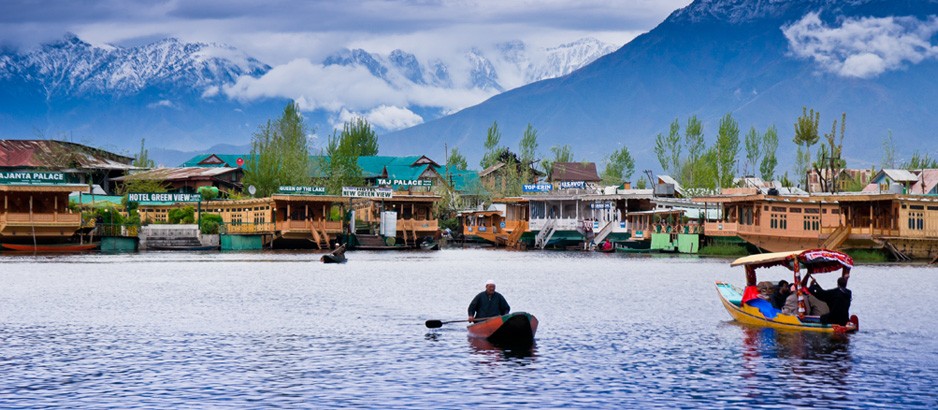
This is quite an interesting story. The Story of Indian Princely State of Kashmir,the name “Kashmir” means “desiccated land”..In the first half of the 1st millennium, the Kashmir region became an important center of Hinduism and later of Buddhism; later in the ninth century, Shaivism arose.
The Origin of Vaishno Devi is as mysterious as it is about several other Shrines from the past era. That is why it still remains difficult to find out exact date from when the Holy Shrine pilgrimage might begin. In fact a geological investigation and research of the Holy Cave has calculated that approximately one million years is the time frame since when pilgrimage continues. Vedic History of Vaishno Devi explains that there was no presence of female worshippers in the past while Rigveda found their presence in the mountain Trikuta. It especially focuses upon Shakti worship practice that continues since Puranic era.

Epic Mahabharatahas detailedmention of the Mother Goddess which indicates its relevance since time immemorial. The Origin of Vaishno Deviis best defined in this epic with reference to the Kurukshetra battlefield in which both Pandavand Kaurv armies faced each other. As the descriptions explain, Pandav warrior chief Arjun had been told by Sri Krishna to initiate meditation before the Vaishno Devi Mother to seek her blessing to win battle. Arjun iniitated mediation thereafter and bowed his head while chanting ‘Jambookatak Chityaishu Nityam Sannihitalaye’ that explains powerful goddess residing in the temple slop in a Jamboo mountain. The Jamboo in it indicated today’s Jammu as the researchers claim.
According to the Mahabharata, the Kambojas ruled Kashmir during the epic period with a Republican system of government from the capital city of Karna-Rajapuram-gatva-Kambojah-nirjitastava., shortened to Rajapura, which has been identified with modern Rajauri.Martand Sun Temple Central shrine, dedicated to the deity Surya. The temple complex was built by the third ruler of the Karkota dynasty, Lalitaditya Muktapida, in the 8th century CE. It is one of the largest temple complex on the Indian Subcontinent.
In the eighth century, Karkota Empire established themselves as rulers of Kashmir.Kashmir grew as an imperial power under the Karkotas. Chandrapida of this dynasty was recognized by an imperial order of the Chinese emperor as the king of Kashmir.
Islamization in Kashmir took place during 13th to 15th century and led to the eventual decline of the Kashmir Shaivism in Kashmir. However, the achievements of the previous civilizations were not lost, but were to a great extent absorbed by the new Islamic polity and culture which gave rise to Kashmir Sufi Mysticism History of Kashmir written by Kalhana in the mid-12th century, it is stated that the valley of Kashmir was formerly a lake.
During the 11th century, Mahmud of Ghazni made two attempts to conquer Kashmir. However, both his campaigns failed because he could not siege the fortress at Lohkot.
In the 14th century, Islam gradually became the dominant religion in Kashmir.Islamic preacher Sheikh Nooruddin Noorani, who is traditionally revered by Hindus as Nund Rishi, combined elements of Kashmir Shaivism with Sufi mysticism in his discourses.
The Sultans between 1354–1470 CE were tolerant of other religions with the exception of Sultan Sikandar (1389–1413 CE). Sultan Sikandar imposed taxes on non–Muslims, forced conversions to Islam, and earned the title But–Shikan for destroying idols.Kashmir did not witness direct Mughal rule till the reign of Mughal padshah (emperor) Akbar. During successive Mughal emperors many celebrated gardens, mosques and palaces were constructed. Religious intolerance and discriminatory taxation reappeared when Mughal emperor Aurangzeb ascended to the throne in 1658 CE. After his death, the influence of the Mughal Empire declined.
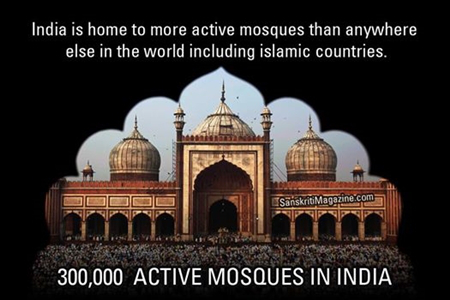
In 1819, the Kashmir valley passed from the control of the Durrani Empire of Afghanistan, and four centuries of Muslim rule under the Mughals and the Afghans, to the conquering armies of the Sikhs under Maharaja Ranjit Singh of Punjab. The respect shown by those who worked for the Maharajah is best highlighted, by the Sikh Empire‘s foreign minister, a Muslim named Fakir Azizuddin. The Empire was effectively secular as it did not give preference to Sikhs, or discriminate against Muslims, Hindus or even atheists. Kashmir became the second highest revenue earner for the Sikh empire. During this time Kashmiri shawls became known worldwide, attracting many buyers especially in the west.
Dogra Rulers and Kashmir Accession towards India
Ranbir Singh
The most outstanding achievement of Ranbir Singh who is considered to be the greatest of the Dogra rulers, was the reconquest of Gilgit and subjugation of the frontier states of Hunza and Nagar. He organized a big expedition to which almost every Dogra family contributed a soldier in 1860 under the command of Colonel Devi Singh. It inflicted a crushing defeat on the recalitrant Rajas and thus avenged the earlier Dogra defeat. Chitral also accepted his sovereignty in 1876.
Hari Singh 1925-1951
Maharaja Hari Singh was the last Dogra ruler of a dynasty which did the improbable task of holding together the state for a century. The Dogras created the state of Jammu and Kashmir which included Ladakh, Gilgit-Baltistan, Muzaffarabad-Mirpur, Aksai Chin and Saksham Valley with feudatories like Hunza and Nagar.

A man not keen on religious rituals, he did not discriminate between his Hindu and Muslim subjects. Indifferent to the opinions of his fellow coreligionists, he gave importance only to meritocracy and appointed the best of Muslims in his court, administration and the army.
Before Sheikh Abdullah’s virulent anti-Dogra campaign and many an unholy nexus that changed the winds, the army was a fine blend of Dogras, Sikhs, Gorkhas, Pathans, Hindu and Muslim Rajputs from Mirpur and Poonch, many of whom are now in Pakistan-occupied Jammu and Kashmir and still swear loyalty to the Dogra dynasty. Apart from the meager resources of the State, he spent huge sums from his accumulated family treasures as well as his own privy purse to beautify the valley and equip it with modern amenities for Indian and foreign tourists.

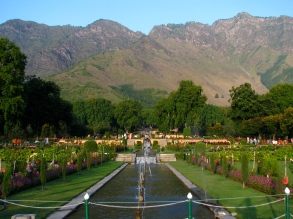
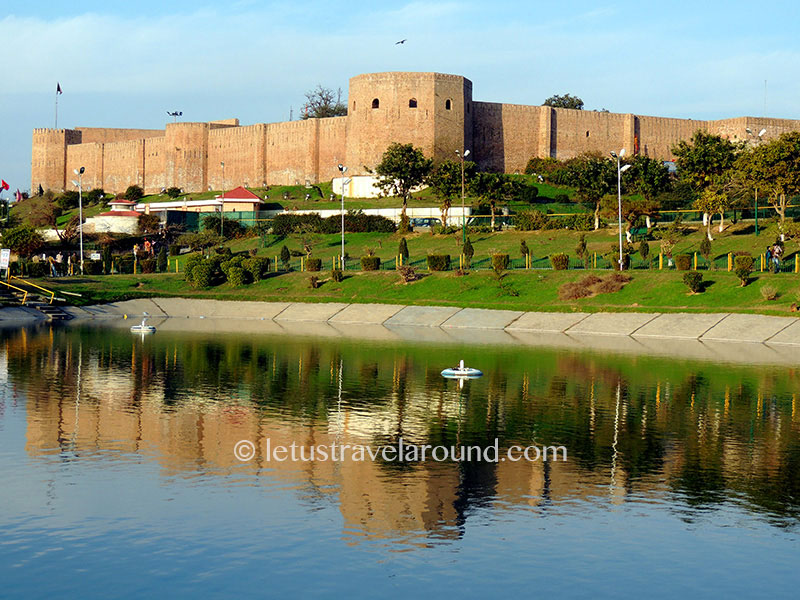
A State called as the Natural heaven and a very Famous Beeline Attached to it is “Agar Kahi Swarg Hai To Yehi Hai” (If there Is any Heaven It’s here). The beauty of Kashmir Never fails to amaze you the Shikara, the Mountains, the Cold, the beauty of Kashmir cannot be matched to any place in the Indian Sub-Continent, Kashmir is a land of beautiful valleys, Spiritual places for both Hindus and Muslims. A land which has taught people of tolerance, beliefs, spirituality, water sports, wildlife and natural beauty which can mesmerize and mystify anyone who has been to Kashmir at her very best.
The Epitome of Natural Beauty Of Kashmir cannot just be written down, The rulers of the past have given there volunatry contribution in defining Kashmirs Natural Aura on various accounts which can be found in the history books of Jammu & Kashmir, but the Irony of India has been from “Beauty always comes with a Beast.” This beast however came in the form of Failed Policies, Politics, Power, Threats, Communalism, Wars and Terrorism that has now eloped the beauty of Kashmir.
How & Why Kashmir was Assimilated to India
The founder of Pakistan, Mohammad Ali Jinnah, had perhaps assumed that Kashmir, by the logic of its majority Muslim population, would become a part of his country. But a few years before Partition, when he sent an aide to Kashmir for an assessment, the conclusion was sobering: “No important religious leader has ever made Kashmir his home or even an ordinary centre of Islamic activities,” the aide reported. “It will require considerable effort, spread over a long period of time, to reform them and convert them to true Muslims.”
Hari Singh, in the weeks after August 15, 1947, gave no indication of giving up his State’s independence. Pakistan then decided to force the issue, and a tribal invasion to drive out the Maharaja was given the green signal.
According to C. B. Duke, the then British High Commissioner in Lahore, “[Kashmir] has always been regarded as a land flowing with milk and honey, and if to the temptation to loot [by the tribesmen] is added the merit of assisting oppressed Muslims, the attractions will be nigh irresistible.”
In the early hours of October 24, 1947 the invasion began, as thousands of tribal Pathans swept into Kashmir killing approximately 300,000(rumored) officially 100,000 Muslims and Hindus in the valley, Women and Girls were raped children were killed and The tribal’s destination: the state’s capital, Srinagar, from where Hari Singh ruled.

The Maharaja appealed to India for help.
On 25 October, V. P. Menon, a civil servant considered to be close to Patel, flew to Srinagar to get Hari Singh’s nod for Kashmir’s accession to India.
On 26 October, Hari Singh and his durbar shifted to Jammu, to the safety of the Maharaja’s winter palace, and out of harm’s way from the marauding tribesmen.
Hari Singh’s prime minister, M. C. Mahajan, later recalled: “I requested immediate military aid on any terms. [I urged Nehru to] give us the military force we need. Take the accession and give whatever power you (India) desire to the popular party. The [Indian] army must fly to save Srinagar or else I will go to Lahore and negotiate terms with Mr. Jinnah.”
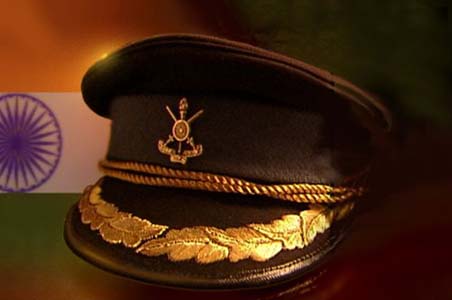
The accession to India was completed.

On 27 October, India’s 1st Sikh battalion flew into Srinagar. “In the early hours of the morning of the 27th, I could hear the noise of the planes carrying military personnel to Srinagar. At about 9 a.m., I got a message from Srinagar that [Indian] troops had landed there and had gone into action,” Mahajan later recalled.
Srinagar was soon secured from the Pakistani invaders but the battles in the larger region were just beginning.
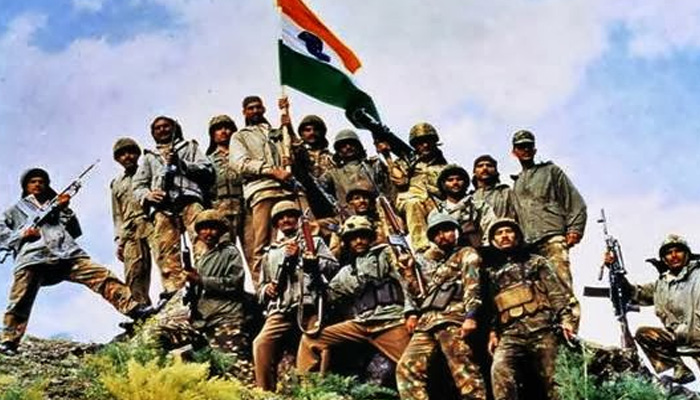
When Jinnah learnt of the Indian troops’ landing, he reportedly ordered his acting British commander-in-chief General Sir Douglas Gracey to move two brigades into Kashmir — one from Rawalpindi and another from Sialkot. The Sialkot army was supposed to march to Jammu and arrest Hari Singh. The Rawalpindi column would take Srinagar. Gracey refused, saying he could not follow orders that would plunge India and Pakistan into war, without the approval of Field Marshal Sir Claude Auchinleck.
Predictably enough, Auchinleck would not agree to sending troops to Kashmir, Lord Louis Mountbatten, India’s viceroy, later described a volatile meeting he had with Jinnah in the days following Kashmir’s accession to India: “Jinnah said that this accession was the end of a long intrigue and that it had been brought about by violence. I countered this by saying that I entirely agreed that the accession had been brought about by violence; I knew the Maharaja was most anxious to remain independent, and, nothing but the terror or violence could have made him accede to either Dominion; the violence had come from tribes for whom Pakistan was responsible ”
Pakistan finally did send troops to Kashmir but by then Indian forces had taken control of nearly two thirds of the state. Gilgit and Baltistan territories were secured by Pakistani troops. Fighting between Indian troops, and the tribesmen and Pakistani troops continued for more than a year after the accession, in what is generally known as the first India-Pakistan war.
Finally, a United Nations (UN) ceasefire was arranged at the end of 1948. After long negotiations, the cease-fire was agreed to by both countries, and came into effect. The terms of the cease-fire, laid out in a United Nations resolution of August 13, 1948, were adopted by the UN on January 5, 1949.
India and Pakistan have different views on the Instrument of Accession and the circumstances under which it was executed. The Indian government’s stated position is: “The Accession of the State of Jammu and Kashmir to India, signed by the Maharaja [erstwhile ruler of the State] on October 26, 1947, was completely valid under the Government of India Act [1935] and international law and was total and irrevocable. The Accession was also supported by the largest political party in the State, the National Conference. In the Indian Independence Act, there was no provision for any conditional accession.”
Induction of Article 370 and Provisions:
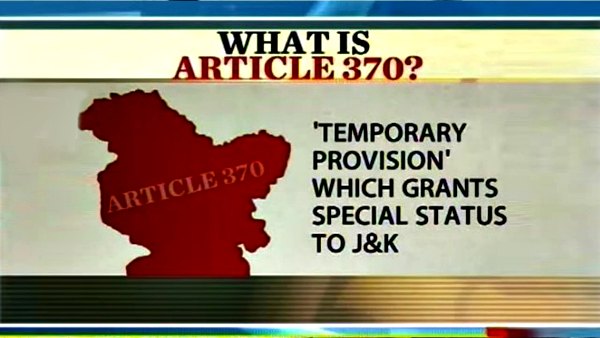
In exercise of the powers conferred by clause (1) of article 370 of the Constitution, the President, with the concurrence of the Government of the State of Jammu and Kashmir made The Constitution (Application to Jammu and Kashmir) Order, 1950 which came into force on 26 January 1950 and was later superseded.
But what exactly is Article 370 and why is the Article so important to keep Jammu and Kashmir as a part of India? Here are 10 facts that explain why:
- According to the Constitution of India, Article 370 provides temporary provisions to the state of Jammu and Kashmir, granting it special autonomy.
- The article says that the provisions of Article 238, which was omitted from the Constitution in 1956 when Indian states were reorganised, shall not apply to the state of Jammu and Kashmir.
- Dr B R Ambedkar, the principal drafter of the Indian Constitution, had refused to draft Article 370.
- In 1949, the then Prime Minister Jawaharlal Nehru had directed Kashmiri leader Sheikh Abdullah to consult Ambedkar (then law minister) to prepare the draft of a suitable article to be included in the Constitution.
- Article 370 was eventually drafted by Gopalaswami Ayyangar
- Ayyangar was a minister without portfolio in the first Union Cabinet of India. He was also a former Diwan to Maharajah Hari Singh of Jammu and Kashmir
- Article 370 is drafted in Amendment of the Constitution section, in Part XXI, under Temporary and Transitional Provisions.
- The original draft explained “the Government of the State means the person for the time being recognised by the President as the Maharaja of Jammu and Kashmir acting on the advice of the Council of Ministers for the time being in office under the Maharaja’s Proclamation dated the fifth day of March, 1948.”
- On November 15, 1952, it was changed to “the Government of the State means the person for the time being recognised by the President on the recommendation of the Legislative Assembly of the State as the Sadr-i-Riyasat (now Governor) of Jammu and Kashmir, acting on the advice of the Council of Ministers of the State for the time being in office.”
- Under Article 370 the Indian Parliament cannot increase or reduce the borders of the state.
AFSPA
Jammu & Kashmir AFSPA, 1990 is an emergency law that gives legal cover to the armed forces operating in disturbed areas from prosecution.

Armed militancy
AFSPA was brought in Kashmir to deal with the situation created by ISI sponsored militancy in the valley and other areas. It is a tough law but the situation in Kashmir is not an easy one. Because of Constant Intervention of Pakistan ISI, All Seperatists leaders of kashmir bon homie with ISI, they continously brain washed kashmiri youth. This Seperatists leaders took advantage of largest democracy and where busy in harming army by killing army men, stone pelting, using hi tech weapons, they tried to destroy democracy and wanted pakistan power to come in, in kashmir. Indian Government decided to give special powers to army, here it should be noted that if it would have been some other country like China, Pakistan, verbal orders would have been given to army to kill this seperatists brain washing kashmiri youth, but being a largest democracy of the world, this special power act was brought for the protection of young kashmiris.
The Court extended the scope of the powers vested vide Sections 4 & 6 of the Act, so as to include, by implication,the power to interrogate the person arrested.
There is a perception that while acting under AFSPA, the army is the ‘perpetrator, the sole judge and the jury’ and hence is free to violate human dignity and rights. This is far from the truth. The‘Dos and Don’ts’ for conduct of operations have a legal status having been approved by the Supreme Court, thus intentionally violating them would amount to committing a crime.
The law was first implemented on July 5, 1990, when the entire law-and-order machinery collapsed in the Valley and normal law was found inadequate to tackle the rising graph of armed militancy. The then state government declared the Kashmir Valley as a disturbed area under section 3 of AFSPA. Later, on August 10, 2001, the J&K government extended disturbed area provision to the Jammu province also.
Kashmir conflict
India has successfully defended and won all armed conflict from Pakistan on various occasion and have kept their promise of keeping Kashmir a safe Haven for the people.
War of 1947 led to IOA of Kashmir
War of 1965
The 1965 War remains memorable for two things. One was a monumental miscalculation by Pakistan. President Ayub Khan, egged on by his scheming and feckless Foreign Minister Zulfikar Ali Bhutto, sent a top-secret order to his army chief General Mohammed Musa: “As a general rule, Hindu morale would not stand for more than a couple of hard blows delivered at the right time and the right place. Such opportunities should therefore be sought and exploited.”
Secondly, India’s leadership – as it has done consistently over the past 2500 years – frittered away on the negotiating table what the soldiers won on the battlefield. Pradhan writes: “In a way, India’s leadership, out of its sense of restraint, fair play and endeavour to seek enduring peace and goodwill with the neighbour, seems to have missed opportunities to solve the problem.”
At the end of a bruising 22-day war, India held 1920 square kilometres of Pakistani territory while Pakistan only held 550 square kilometres of Indian land. The Haji Pir pass was also captured by Indian soldiers after an epic battle. And yet India surrendered everything at the Tashkent Declaration in January 1966.
War of 1971 (Shimla treaty)
After Inflicting defeat on Pakistan in the war of 1971 a Shimla agreement was signed between India and Pakistan some of its features were:
- All disputes between India and Pakistan are bilateral and would be solved bilaterally.
B. There is no role of UN or any other third party mediation to resolve any dispute.
C. Ceasefire line will be converted into LOC, line of control and was clearly demarcated.
D. A further discussions were envisaged to convert this LOC into International Border.
This agreement was approved by parliament of both Pakistan and India and till today Pakistan has not denied or walked out of this agreement. So the fact is question of the state of J & K was addressed and resolution to the same was defined clearly in Shimla Agreement. And it effectively overrode any and every UN resolution on the state of J & K.
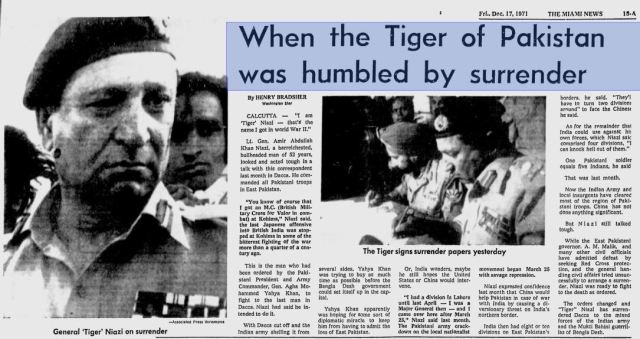

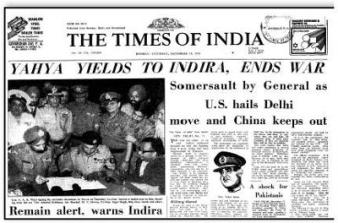
Pakistan does not speak about Shimla Agreement and does not honour the spirit of the same and every meeting between India and Pakistan ends in stalemate or inconclusive as Pakistan harps on UN resolutions and India’s agenda is on or around Shimla Agreement.
Exodus of Kashmiri Pandits
Here’s an excerpt of this timeline:
September 1989
Pandit political activist, Tika Lal Taploo is shot dead by armed men outside his residence.
January 1990
Massive crowds assemble in mosques across valley, shouting anti-india, anti-pandit slogans. The exodus of Kashmiri Pandits begins. In the next few months, hundreds of innocent Pandits are tortured, killed and raped. By the year-end, about 350,000 Pandits have escaped from the Valley and taken refuge in Jammy and elsewhere. Only a handful of them stay back.
Here’s an excerpt of Col Tej Kumar Tikoo’s book, Kashmir: Its Aborigines and Their Exodus, describing the fateful night:
“As the night fell, the microscopic community became panic-stricken when the Valley began reverberating with the war-cries of Islamists, who had stage-managed the whole event with great care; choosing its timing and the slogans to be used. A host of highly provocative, communal and threatening slogans, interspersed with martial songs, incited the Muslims to come out on the streets and break the chains of ‘slavery’. These exhortations urged the faithful to give a final push to the Kafir in order to ring in the true Islamic order. These slogans were mixed with precise and unambiguous threats to Pandits. They were presented with three choices – Ralive, Tsaliv ya Galive (convert to Islam, leave the place or perish). Tens of thousands of Kashmiri Muslims poured into the streets of the Valley, shouting ‘death to India’ and death to Kafirs…
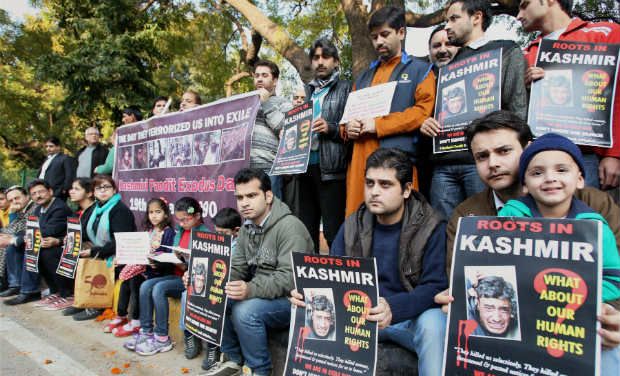
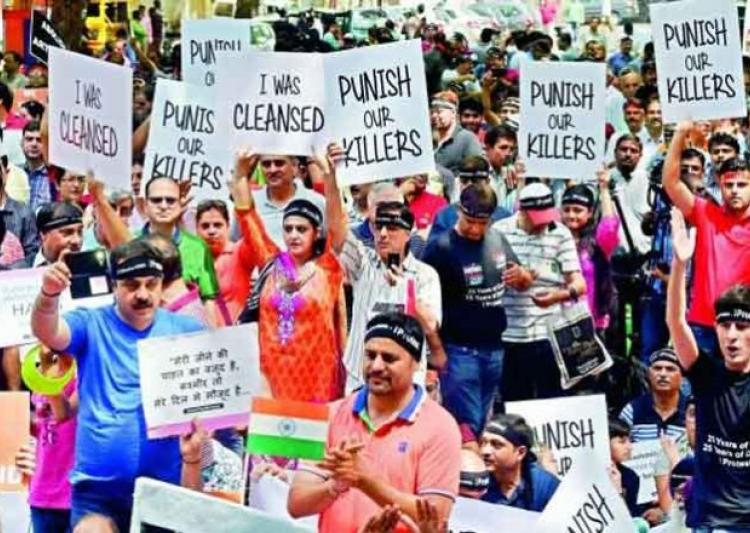
The Pandits could see the writing on the wall. If they were lucky enough to see the night through, they would have to vacate the place before they met the same fate as Tikka Lal Taploo and many others. The Seventh Exodus was surely staring them in the face. By morning, it became apparent to Pandits that Kashmiri Muslims had decided to throw them out from the Valley. Broadcasting vicious Jehadi sermons and revolutionary songs, interspersed with blood curdling shouts and shrieks, threatening Kashmiri Pandits with dire consequences, became a routine ‘Mantra’ of the Muslims of the Valley, to force them to flee from Kashmir…”
Siachen conflict

On 13 April 1984, Indian troops snatched control of the Siachen glacier in northern Kashmir, narrowly beating Pakistan. Thirty years later, the two sides remain locked in a stand-off, but the Indian army mountaineer who inspired the operation says his country must hang on whatever the cost.
March 1997
Terrorists drag out seven Kashmiri Pandits from their houses in Sangrampora village and gun them down.
January 1998
23 Kashmiri Pandits, including women and children, shot in cold blood in Wandhama Village.
March 2003
24 Kashmiri Pandits, including infants, brutally shot dead in Nadimarg Village.
2012
Thousands of Pandits still languish in refugee settlements of 8 x 8. After more than two decades, the Kashmiri Pandit community has still not been able to return to their ancestral land. They are dispersed all over from Jammu to Johannesburg.”
India has seen several changes ever since that fateful night in 1990. New governments have come and gone, multiple developments have come forth nationwide, but scores of Kashmiri Pandits who were chased out of their homes have still not been able to find a way back.
Kargil War 1999
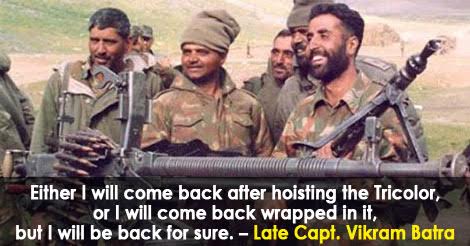
The Kargil war, which commenced on May 1999, was announced after the infiltration of Pakistani troops and Kashmiri militants into Kargil district of Jammu and Kashmir and along the Line of Control (LOC). The intrusion into the area, that divided the Indian territory of Ladakh from the northern areas of the state, had come as a complete surprise to the Indian army and Operation Vijay was immediately launched to flush our enemies from the Kargil sector.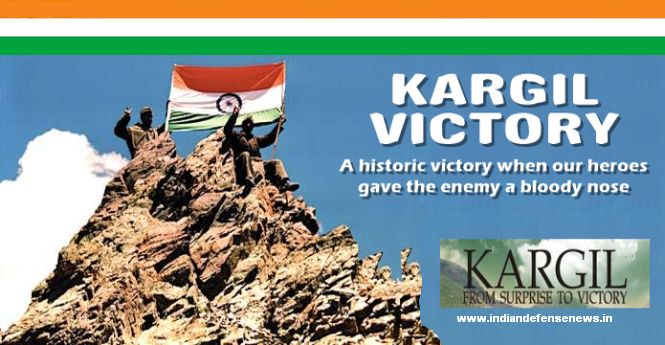
WAR WON, LIVES LOST
The war resulted in the death of hundreds of soldiers on both sides and left thousands injured. While Pakistan said to have lost nearly 500 soldiers, the US Department of States gave an estimate of nearly 700 fatalities. India, on the other hand, said that around 500 soldiers were killed and more than a thousand injured. Reports also say that an Indian pilot was captured by the Pakistani forces and few Pakistani soldiers were captured by India.

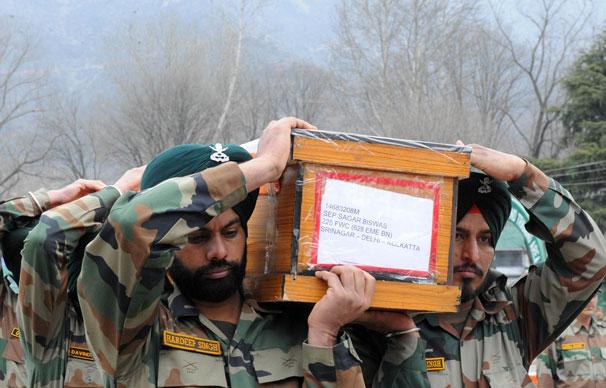
Border skirmishes. 2011. 2013. 2014–15. 2016 confrontation.
After all this Pakistan plays the mercy card and begs the UN to intervene. Four appalling defeats in over a period of over 70 years and the bravery, sacrifice of Indian soldiers who still stand on the world’s highest glacier at Siachen to protect Kashmir The Crown jewel of India. India is a country which has shown the world that it can win war through the Gandhian Philosophy of peace and “Ahimsa” (non violence) but when her Interests are threatened it also reminds the world that it has the world’s third largest army, The fourth largest air force,Seventh Largest Navy in the world adding to this India also have Nuclear capable Warheads with Advanced Anti Ballistic Missile System for its defense.
India is in the unique list of the most peaceful and secular country where it has not had any armed conflicts with other country to gain Territorial advantage and establish itself as their masters. From The history of Ancient India to modern India it has given the world a spiritual path, a place recognized as a center for learning in the ancient era, and a country looked upon as an ally from many nation across the world.





Good article and research work..keep it up. 🙂
LikeLike
Good one 👍
LikeLike
Informative 🙂
LikeLiked by 1 person
Thank u 🙂
LikeLike